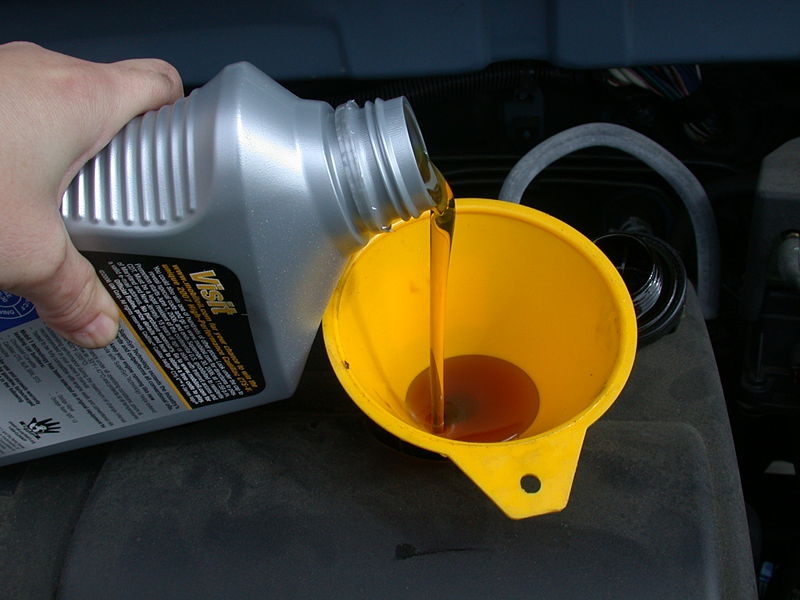
Choosing the right oil viscosity grade for your vehicle requires consideration not only of viscosity, but also of the temperatures in which your vehicle will be operating. What does all that mean, and what effects can you expect to see in your car? It's fairly simple, and once you understand it, both you and your car will benefit for your car's lifetime.
Viscosity of any liquid can be measured in a few different ways. When talking about what you see when pouring that liquid out, it's called kinematic viscosity. This measurement can be expressed in two forms: the Sabolt Universal Second (SSU or SUS) and the centistoke (cSt). Two temperatures are used to determine kinematic viscosity: 104 degrees F (40 degrees C) and 212 degrees F (100 degrees C), depending on which grading system is used. Comparison of viscosity levels between materials must take into account which unit of measure is being used, as well as the temperature at which a given viscosity grade was made.
To further complicate matters, viscosity can also be measured in a unit called centipoise (cP). This measures dynamic (or absolute) viscosity, which measures the resistance of objects moving through a given liquid (see Reference 1).
Viscosity is directly affected by temperature. That's why both monograde and multigrade oils are rated a certain way. The Society of Automotive Engineers (SAE) provides viscosity ratings at both 0 degrees F and 200 degrees F. A "W" after a number indicating your oil's grade will inform you of what the viscosity is at 0 degrees F. The "W" stands for "winter," rather than "weight."
Monograde oils are good for constant temperatures. If, however, you'll be driving through changing climates, multigrade oils covering a range of temperatures and viscosities will be more useful to you (see Reference 3).
When your motor oil is the proper viscosity for the temperatures in which you're driving your car, you'll experience decreased engine wear. Oil at a proper viscosity protects the parts of your engine that it flows through, and keeps them from coming in contact with one another. If any bits of metal or other debris are loose inside your engine, the oil also keeps those bits from clogging your engine and causing it to become inoperable. That's why your oil looks so dirty when you change it---dirty used oil has been doing its job and keeping your car running smoothly (see Reference 1).
If you live in a very cold place, you might see some oil on local store shelves that says it's 0W. This number indicates that the oil's pour point (which is exactly what it sounds like) is somewhere around --5 degrees F (or --43 degrees C). Note that this is slightly below the same range for a 5W oil, which will only pour properly without gelling at temperatures of --40 degrees F (-40 degrees C) and above (see Reference 2).
Just because an oil is more viscous doesn't mean that it's necessarily better for your car's engine. Read your car's manual to see what the manufacturer suggests. Note that there's room for experimentation here; what you see in your car's manual is merely what they've tested, so you know exactly what result you can expect to get. However, you'll need to take your local climate and vagaries of temperature into account in order to determine the proper viscosity grade (or grades, more likely) for your vehicle (see References 1 and 3).